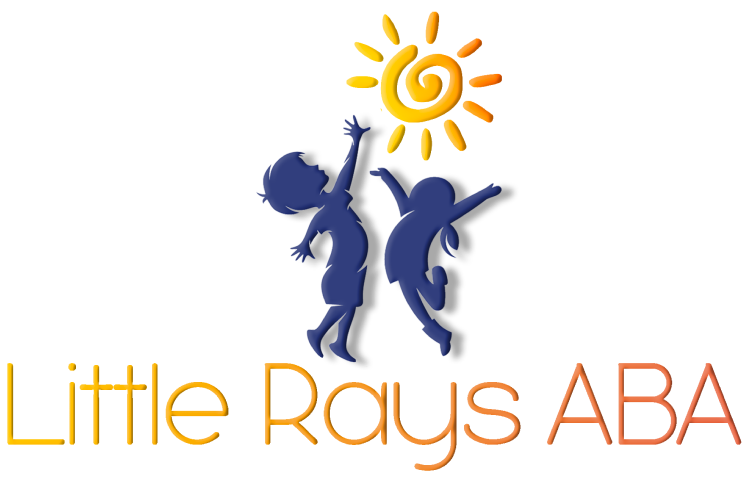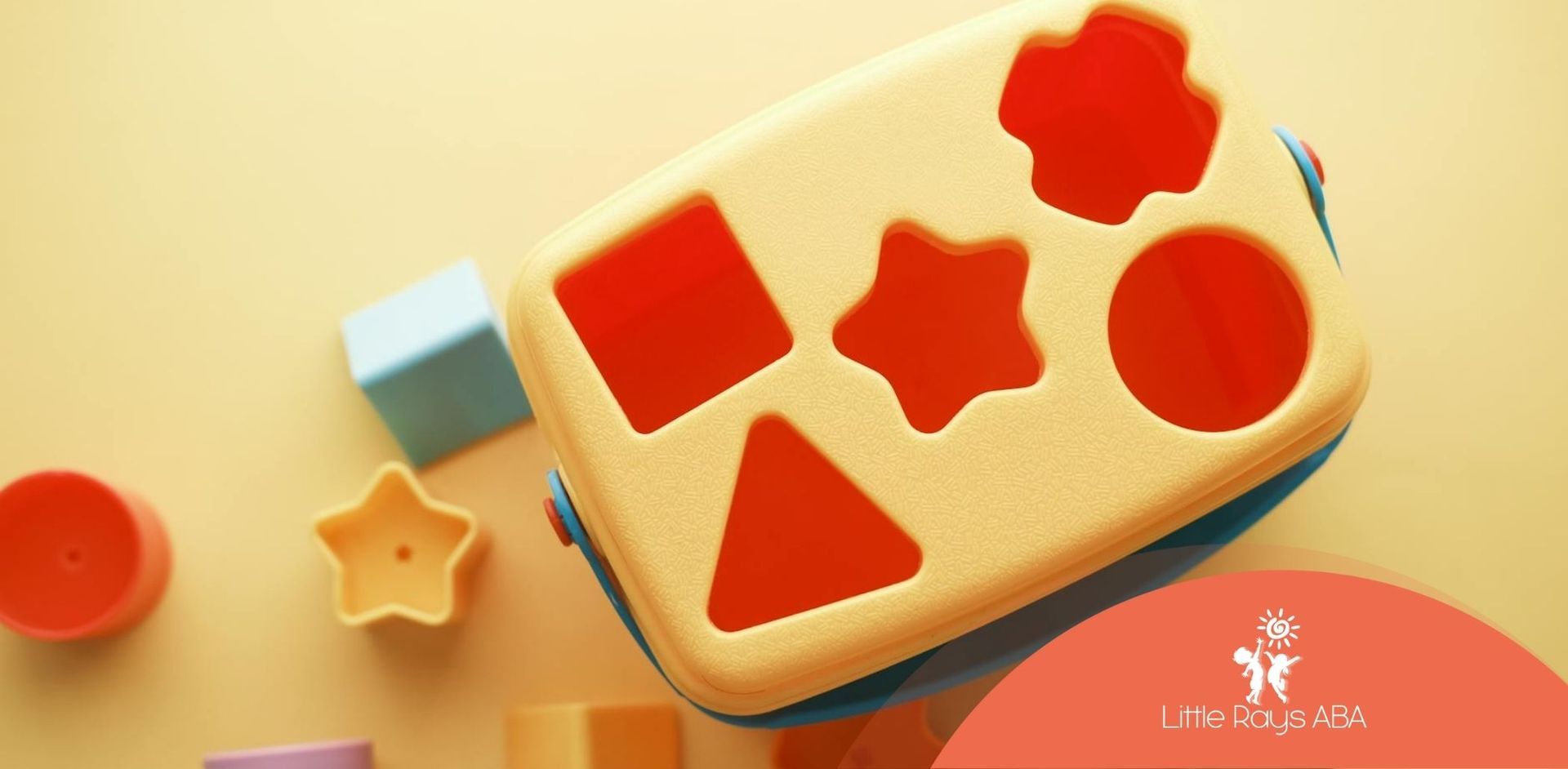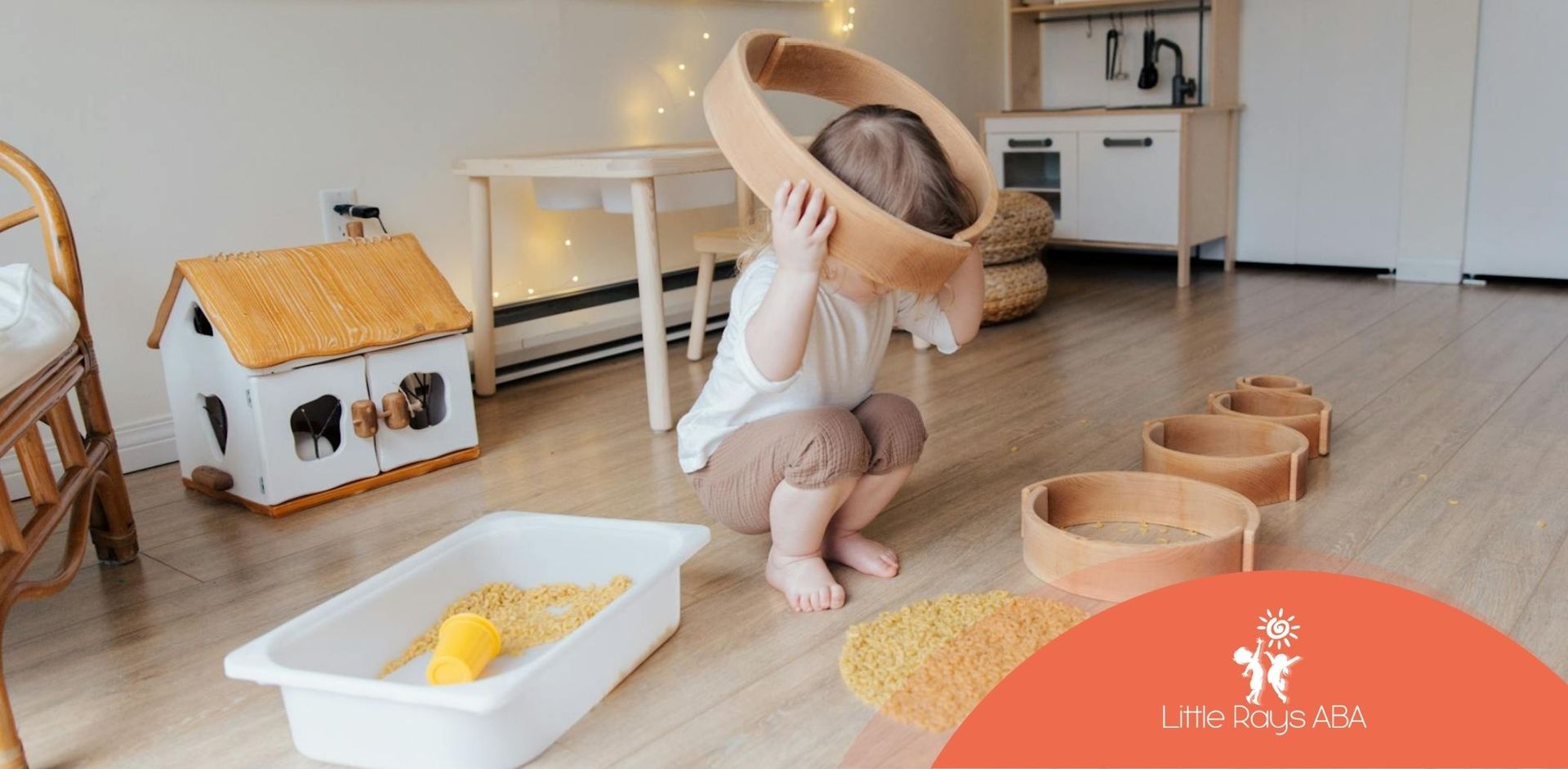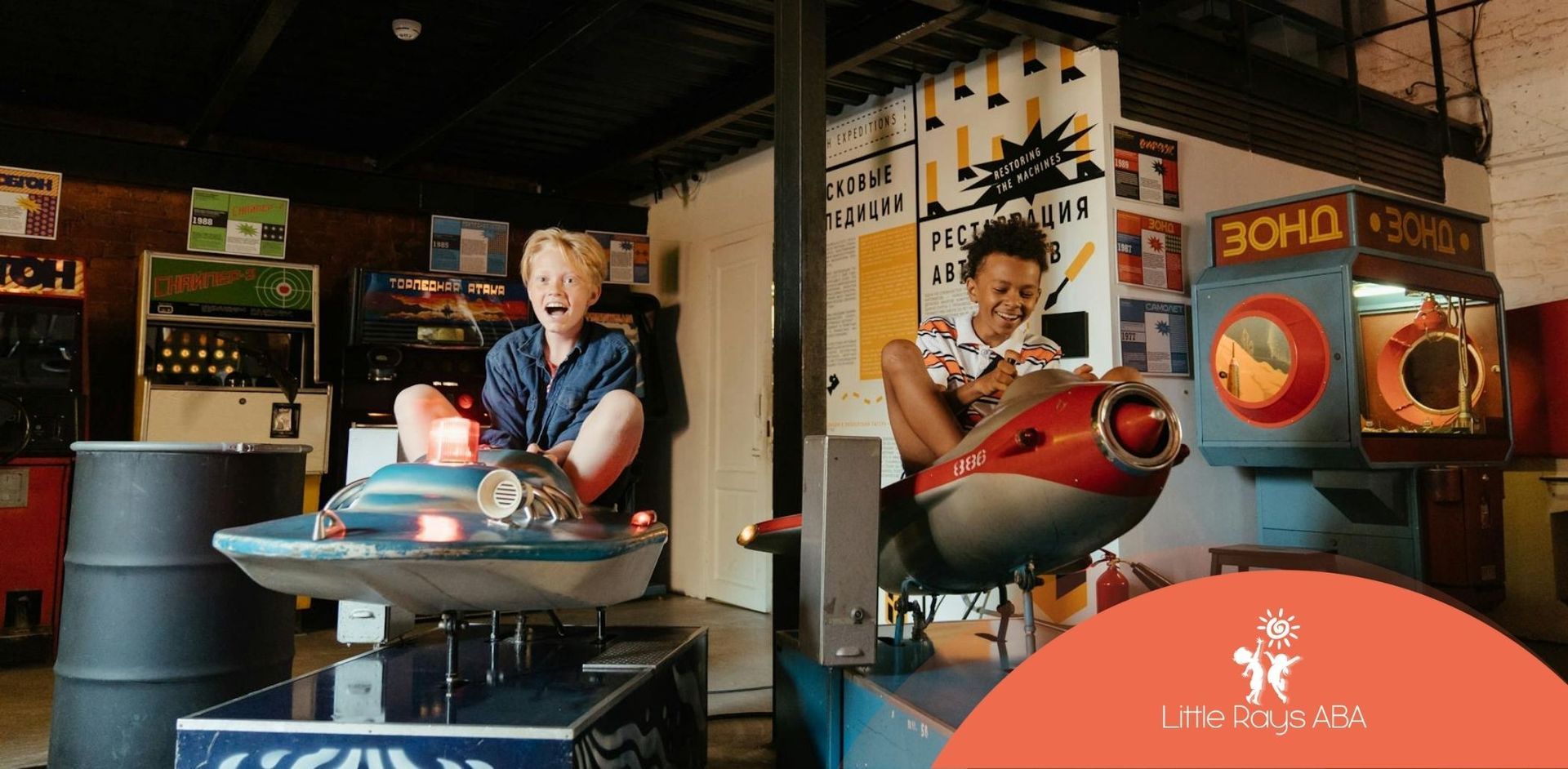Understanding Sensory Toys
Importance of Sensory Toys
Sensory toys are crafted to meet the unique sensory needs of folks with autism, offering a variety of sensory inputs to help balance their experiences and boost overall well-being. These toys are a big deal in helping with focus, attention, self-regulation, and communication skills by creating a sensory-friendly space and structured playtime.
Sensory toys can help individuals with autism develop:
- Focus and attention
- Self-regulation
- Communication skills
- Hand-eye coordination
- Participation and turn-taking
By offering engaging and interactive experiences, sensory toys have a positive impact on a child's growth from birth to early childhood.
Types of Sensory Toys
Sensory toys are made to tickle one or more of a child’s senses, providing experiences that can either get them excited or calm them down. These toys can be sorted into different types based on the sensory input they offer:
| Type of Sensory Toy | Sensory Input | Benefits |
|---|---|---|
| Visual Stimulation Toys | Visual | Boosts visual tracking, focus, and attention |
| Auditory Toys | Auditory | Enhances auditory processing and listening skills |
| Tactile and Textural Toys | Tactile | Offers tactile sensory input, improves fine motor skills |
| Cause and Effect Toys | Multiple | Teaches cause and effect, encourages social interaction |
Visual Stimulation Toys
Visual stimulation toys are all about boosting visual tracking, focus, and attention. These toys often come with bright colors, lights, and moving parts that grab the child's interest. Think light-up toys, spinning tops, and bubble tubes. For more info, check out our section on visual stimulation toys.
Auditory Toys
Auditory toys are great for enhancing auditory processing and listening skills. These toys make sounds, music, or other auditory stimuli that engage the child's hearing. Examples include musical instruments, sound puzzles, and talking toys. For recommended auditory toys, take a look at our section on auditory toys for autism.
Tactile and Textural Toys
Tactile and textural toys offer tactile sensory input and help improve fine motor skills. These toys often have different textures, shapes, and materials that the child can touch and play with. Examples include sensory balls, textured mats, and fidget toys. Learn more about tactile and textural toys in our section on tactile and textural toys.
Cause and Effect Toys
Cause and effect toys engage multiple senses and teach the concept of cause and effect. These toys often involve pressing buttons, pulling levers, or other actions that produce a response. Examples include pop-up toys, interactive books, and electronic learning toys. Discover more about these toys in our section on cause and effect toys.
By getting a grip on the importance and types of sensory toys, parents, educators, and therapists can pick the best autism-friendly toys to support the sensory needs and development of children with autism.
Visual Stimulation Toys
Visual stimulation toys are like magic wands for kids with autism, helping them grow and learn in a fun way. These toys are all about grabbing attention, boosting focus, and sharpening visual skills with their bright colors, lights, and patterns.
Benefits of Visual Stimulation Toys
These toys are a real game-changer for kids with autism. They help with visual tracking, which is super important for reading and school stuff. Plus, they make it easier for kids to understand what they see around them.
But wait, there's more! These toys can be a soothing balm for kids who get overwhelmed by too much sensory input. Their repetitive and predictable nature can ease anxiety and help kids chill out. They also boost engagement and hand-eye coordination, which are key for growing up strong and smart.
Examples of Visual Stimulation Toys
There's a whole world of visual stimulation toys out there, each catering to the unique sensory needs of kids with autism. Check out these cool examples:
| Toy Name | Description | Benefits |
|---|---|---|
| Fat Brain Toys Teeter Popper | A toy that rocks and spins | Boosts balance and coordination |
| Harkla Compression Sensory Swing | A swing that gently compresses and swings | Offers calming sensory input |
| Playskool Sit ‘n Spin | A spinning toy for sitting and spinning | Enhances balance and motor skills |
| Light-Up Sensory Balls | Balls that light up when bounced or squeezed | Grabs attention and encourages focus |
| Liquid Motion Bubbler | A visual timer with colorful, slow-moving liquid | Promotes relaxation and visual tracking |
These toys are designed to captivate kids with autism, giving them engaging and interactive experiences.
Visual stimulation toys are a must-have for creating a welcoming space for kids with autism. They help kids build important skills while providing sensory input that can be both energizing and calming.
Auditory Toys for Autism
Auditory toys are a big deal for kids with autism. They focus on the sense of hearing, helping kids explore sounds, recognize them, and improve their ability to focus on what they hear.
Boosting Listening Skills
These toys are all about getting kids with autism interested in different sounds. They can help with listening skills, which are super important for talking and hanging out with others. Playing with these toys can help kids pay better attention and manage themselves.
Listening to different sounds can also help kids tell them apart, which is key for learning to talk. Playing with these toys makes kids more aware of the sounds around them, helping them understand and react to what they hear.
Top Picks for Auditory Toys
Check out these auditory toys that can be great for kids with autism:
| Toy Name | Description | Benefits |
|---|---|---|
| Musical Instruments | Includes drums, xylophones, and tambourines | Encourages sound exploration and recognition |
| Sound Puzzles | Puzzles that make sounds when pieces fit | Boosts sound discrimination and problem-solving |
| Talking Toys | Toys that talk or make sounds when pressed | Helps with language skills and listening |
| White Noise Machines | Devices that play calming sounds like waves or rain | Aids in relaxation and focus |
| Interactive Storybooks | Books with sound effects and narration | Promotes listening and understanding |
These toys come in all shapes and sizes, catering to different sound preferences.
Auditory toys can really help make a sensory-friendly space for kids with autism. By adding these toys to their daily routine, parents and caregivers can help kids build important listening skills while having fun.
Tactile and Textural Toys
Tactile and textural toys are like magic wands for kids with autism, helping them feel more at ease and sharpening their skills. These toys are not just fun; they're a lifeline for sensory input, boosting focus, calming nerves, and aiding in development.
Tactile Sensory Input
For kids with autism, tactile sensory input is like a secret handshake with the world. It helps them make sense of different textures and sensations. Toys like the
Neliblu Wacky Tracks Snap and Click Fidget Toys are a hit because they offer tactile input that can ease stress and anxiety. These toys are like a superhero cape for autistic kids, helping them concentrate better and get the sensory stimulation they crave.
| Toy Name | Benefits |
|---|---|
| Neliblu Wacky Tracks Snap and Click Fidget Toys | Stress relief, boosts focus, sensory stimulation |
Textural Stimulation Toys
Textural stimulation toys are all about touchy-feely fun, offering a buffet of tactile experiences. They're like a gym for the brain, helping kids develop skills like pattern recognition, fine motor skills, hand-eye coordination, and more. These toys are designed to give autistic individuals the sensory experiences they often seek, promoting calmness and focus.
| Skill Set | Description |
|---|---|
| Pattern Recognition | Spotting and understanding patterns |
| Fine Motor Skills | Small muscle movement magic |
| Hand-Eye Coordination | Syncing hands and eyes like a pro |
| Visual Awareness | Heightened awareness of visual cues |
| Proprioception | Knowing where your body is in space |
| Gross Motor Skills | Big muscle movement mastery |
| Auditory Sense | Better response to sounds |
National Autism Resources is like a treasure chest of sensory toys for autism, ADHD, and sensory processing disorders. They've got calming sensory tools, tactile fidgets, and multi-sensory play items. Their lineup includes weighted toys for relaxation, chewable jewelry for oral needs, and visual and auditory stimulators to help focus and ease anxiety, suitable for all ages.
Cause and Effect Toys
Teaching Cause and Effect
Cause and effect toys are a great choice for kids with autism because they help teach the basic idea that what they do can change things around them. These toys give instant positive feedback, which is super important for learning and keeping kids interested. When kids see that their actions lead to certain results, they start to feel like they have some control and can predict what's going to happen next.
Some examples of these toys are:
- Pop-up toys: Push a button, and a little character jumps out.
- Light-up toys: Hit a button, and the lights come on.
- Musical toys: Press a key, and music plays.
These toys aren't just fun; they're also a great way for kids with autism to learn about cause and effect while playing.
Social Interaction with Cause and Effect Toys
Besides teaching cause and effect, these toys can help kids learn to interact with others. They can be used for simple turn-taking games, which are key for building social skills. Playing these games can help nonverbal kids connect with others, encouraging shared attention and taking turns.
Imagine a child pressing a button to light up a toy, then handing it over to a friend or caregiver for their turn. This back-and-forth play boosts communication and teamwork, setting the stage for more complex social interactions.
| Toy Type | Social Interaction Benefit |
|---|---|
| Pop-up Toys | Encourages taking turns |
| Light-up Toys | Promotes shared focus |
| Musical Toys | Builds mutual play |
By adding cause and effect toys to playtime, parents, teachers, and therapists can create fun and educational moments that help kids with autism develop important skills.
Creating an Autism-Friendly Environment
Making spaces comfy for folks with Autism Spectrum Disorder (ASD) is all about tuning into their sensory needs. It's like giving them a big sensory hug, whether they're chilling at home, learning at school, or out and about.
Sensory Needs in Different Settings
People with autism often experience the world in high-def, so it's key to set up places that don't overwhelm them. Think of sensory-friendly spots as a cozy blanket for their senses.
Home Environment
Home sweet home should be a chill zone. Here's how to keep it mellow:
- Swap out harsh lights for softer ones that don't scream at your eyes.
- Keep the noise down and carve out quiet nooks.
- Stock up on sensory-friendly toys.
Educational Settings
Schools can be a sensory jungle, but with a few tweaks, they can be a haven for learning:
- Hand out noise-canceling headphones to hush the chaos.
- Set up sensory corners with touchy-feely toys.
- Let students take breaks for sensory playtime.
Public Spaces
Public places can be a sensory overload. But with some smart moves, they can be more welcoming:
- Lidl in Northern Ireland has Quiet Hours from 6pm-8pm every Tuesday evening.
- Premier League clubs are adding sensory rooms in their stadiums for a chill spot during games.
Autism-Friendly Initiatives
There's a bunch of cool stuff happening to make life easier for folks with autism. These efforts are all about making spaces more sensory-friendly.
Quiet Spaces
A study from University College London in 2021 found that 92% of people said a quiet space would be a lifesaver, and 60% thought quiet spots in stores were super important for neurodivergent students. Quiet spaces can pop up in:
- Retail stores
- Airports
- Libraries
Autism-Friendly Awards
The National Autistic Society hands out the Autism Friendly Award to businesses that go the extra mile for autistic folks. It's like a gold star for being awesome at making spaces welcoming.
Public Awareness Campaigns
The Too Much Information campaign by the National Autistic Society is all about spreading the word on autism. It breaks down the five main features of autism and offers tips on how to be supportive. This campaign is a big step towards a more understanding world.
By tuning into sensory needs and backing autism-friendly initiatives, we can make spaces more welcoming for folks with autism.
SOURCES:
https://www.healthline.com/health/parenting/toys-for-kids-with-autism
https://nationalautismresources.com/sensory-toys/?srsltid=AfmBOoquo0zqelvC4Y6dDAII2osqyYJHVEpinp8v2_3N0RNYzE7MbUtK
https://www.autism.org.uk/what-we-do/autism-know-how/autism-accreditation/autism-friendly-award/guides-and-resources/accessible-environments
https://alisthub.com.au/resource/understanding-why-autistics-love-collecting-and-playing-with-childrens-toys/
https://nationalautismresources.com/toys-for-autistic-children-and-teens/?srsltid=AfmBOoppH23k8nZQRsiAotfk-eyZ0T8_tp1_JQGoHTF2y7q9-_0ybBhm
Unlock Your Child's Potential with Expert ABA Therapy!
At Little Rays ABA, we provide compassionate, evidence-based ABA therapy to help children with autism thrive. Our personalized approach fosters growth in communication, social skills, and independence.
Get In Touch With Us Today to Get Started With ABA Therapy!
Related Posts
MENU
GET IN TOUCH
7117 San Salvador Dr Boca Raton, FL 33433
3200 Collins Ave Miami Beach, FL 33140



